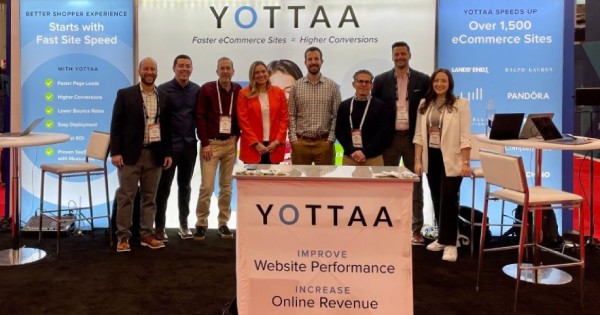Every year at this time, as the winter season begins to wrap up, the weather becomes a little warmer, and the days get longer. And for the retail industry, that also means one thing – the return of conferences across the country.
Some of the major conferences over the past few weeks include Shoptalk, Adobe Summit, and eTail West.
Shoptalk attracts today’s retail decision makers and thought leaders to explore the latest retail technologies and trends to meet the ever-changing needs of today’s shoppers. Adobe Summit is known as the premier ‘Digital Experience Conference’ and this year that moniker certainly didn’t disappoint. The eTail West conference is designed for eCommerce and omni-channel retailers, to help increase business profits with strategic takeaways.
The Importance of Personalization
One of the recurring themes at this year’s conferences revolved around creating a more personalized omnichannel experience to meet the demands of today’s shoppers.
Many attendees discussed the need for personalization, and with it the added level of complexity, whether in store or online. I attended one such Shoptalk session; Achieving Personalization at Scale.
At the Achieving Personalization at Scale session, Amanda Bobb, VP of North America Marketing at Kate Spade, and David Malloy, VP of Enterprise Marketing & Creative Technology at The Estee Lauder Companies addressed the challenges of extending personalization across all customer touchpoints, both digital and in-store.
On the digital side, retailers are achieving personalization through tailored recommendations, dynamic content, and exclusive offers for their customers. While adding third-party technologies such as chat, reviews, and ratings deliver a uniquely-personalized experience, they also introduce a level of complexity to your eCommerce site – often impacting site performance.
For every technology added, sites strain to load, and page load times drag. The impact of slower page loads is real – a one second delay in page load increases bounce rate by nearly 9% and decreases conversion by nearly six percent. Slow sites bounce shoppers, and thus lose the opportunity to leverage those valuable third-party contributions.
The solution to a slow website no longer requires you to choose one technology or the other. Instead, with YOTTAA’s platform, retailers can now have as many third-party technologies as they require to deliver a differentiated and seamless shopping experience.
Optimizing Third-Party Technologies
As attendees who stopped by YOTTAA’s booth at these conferences learned, there is a simple way to manage all of your third-party technologies without sacrificing any site speed.
YOTTAA optimizes third-party technologies in several ways to deliver a better website performance and user experience.
- Consolidation: YOTTAA consolidates multiple third-party technologies into a single script to reduce the number of requests and improve website speed. This consolidation process also helps reduce the risk of conflicts between different third-party technologies.
- Asynchronous loading: YOTTAA loads third-party technologies asynchronously, which means they load in the background without blocking other website content from loading.
- Lazy loading: YOTTAA uses lazy loading to defer the loading of non-critical third-party technologies until after the initial page load.
- Prioritization: YOTTAA prioritizes the loading of critical third-party technologies over non-critical ones to ensure that essential website functionality and user experience are not compromised.
- Performance monitoring: YOTTAA monitors the performance of third-party technologies and provides insights and recommendations to website owners on how to optimize their usage further.
The importance of third parties such as personalization is only going to grow stronger, and, regardless of the industry they were in, attendees recognized the benefits of optimizing third-party technologies. YOTTAA conducted several completely free site performance evaluations to show attendees just how fast their eCommerce sites really were (or weren’t).
Many attendees were stunned to learn that their sites weren’t nearly as fast as they thought they were. And more often than not, those slower websites had an excessive number of third-party technologies in place, without any sort of plan to manage them.
The growth of personalization, and other third-party technologies is only going to become more paramount to retaining customers and growing conversion rates. An eCommerce site cannot afford to sacrifice page speed at the risk of losing a customer because of an excess of third-party technologies.
For those that we didn’t get a chance to speak to at either Shoptalk, Adobe Summit, or eTail West (and we know how busy a week at a conference can be), reach out and set up a time to get your personalized FREE site performance evaluation.

